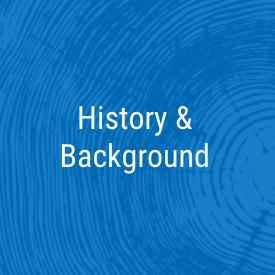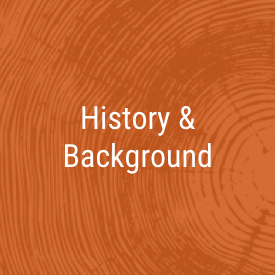The project is sponsored by the San Francisquito Creek Joint Powers Authority (SFCJPA), of which Valley Water is a member agency, in partnership with the U.S. Army Corps of Engineers (USACE).
Preferred project: A federal-state-local partnership
The project is to construct improvements along San Francisquito Creek from San Francisco Bay to just upstream of the Pop-Chaucer Bridge and additional detention of floodwaters upstream of Highway 280 to provide 1% (100-year event) flood protection, ecosystem restoration and recreational benefits to surrounding communities.
Local-state-funding-only partnership
Highway 101 to Pope-Chaucer Bridge
This stretch of the project will remedy channel constrictions and replace bridges at Newell Road and Pope/Chaucer streets to allow the channel to contain floodwaters of approximately 7,500 cubic feet per second, equivalent to approximately a 1.4% flood event (70-year event). Allowing this level of water to flow through the channel will protect approximately 3,000 parcels in Palo Alto from a flood event close to the February 1998 flood, the largest on record. Currently the channel can only convey approximately a 7% flood event (approximately a 15-year event).
Newell Road Bridge
The Newell Road bridge replacement, unlike the rest of the project elements in this stretch, is sponsored by the City of Palo Alto, which has applied for funding through Caltrans’ Highway Bridge Program (HBP). The project has been programmed by Caltrans to fund approximately 89% of the total cost for replacing the Newell Road bridge, while the local match funds, approximately 11% of the total cost, will be funded by Valley Water through the Safe, Clean Water Program renewal. The City of East Palo Alto and the SFCJPA continue to provide input on the Newell Road bridge replacement.
The SFCJPA continues to pursue partnerships with federal, state and local agencies and grant opportunities for additional construction funding.








On June 27, 2023, the Board approved the schedule adjustment, delaying state-and local-funding-only project (KPI #2) construction start by a year and completion by two years compared with FY22. As a result of the June 27 adjustment, coupled with the schedule adjustment as part of Capital Improvement Program’s Fiscal Years 2024-2028 Five-Year Plan that the Board adopted on May 16, 2023, the project construction will begin in FY24 instead of FY23 and complete in FY27 instead of FY25.
Upstream of Highway 101 Reach (Upstream Reach)
The hydraulic model has been recalibrated to incorporate the conditions observed during the storms that caused the creek’s banks to overflow on December 31, 2022. The San Francisquito Creek Joint Powers Authority (SFCJPA) completed the validation of initial findings through a 3rd party independent review and creek channel surveys and is in the process of executing a Master Services Agreement. The consultant services include updating the project objectives and design criteria based on the recalibrated hydraulics model, and to reevaluate the alternatives listed in the Environmental Impact Report (EIR).
The San Francisquito Creek Joint Powers Authority (SFCJPA) will resume preparing applications for regulatory permits to construct the Upstream Reach of the San Francisquito Creek Flood Protection, Ecosystem Restoration, and Recreation Project (Project) upon completion of reevaluating the EIR alternatives and selecting the preferred project alternative. Draft regulatory permit applications were submitted in July 2022.
The City of Palo Alto continues its negotiations with property owners to acquire right-of-way and pursue construction funding from Caltrans in FY24 for the replacement of the Newell Road Bridge. The design for the Newell Road Bridge was completed in March 2023 and construction is expected to begin by December 2024. The City of Palo Alto is in the process of acquiring a construction management consultant.
The US Army Corps of Engineers (USACE) is leading the implementation of the channel widening sites upstream of Highway 101. The SFCJPA and USACE are implementing a Feasibility Study through the Continuing Authorities Program Section 205 (CAP 205). The draft USACE feasibility study report was completed in July 2022, and the final study report will be resumed when the USACE completes their validation of the recalibrated hydraulics model. The SFCJPA and Valley Water will continue to support the USACE CAP 205 study when it resumes.
Retrofit or replacement of the existing top-of-bank floodwalls along both sides of the creek banks downstream of the Newell Road bridge and upstream of W. Bayshore Road was added to the Project. The SFCJPA will resume preparing a Supplemental EIR in coordination with a consultant through the Master Services Agreement. The SFCJPA will take the lead in developing design documents, which are anticipated to be completed by summer 2025. Construction is expected in 2026.
The Pope-Chaucer Street Bridge Replacement is currently at 85% design. Following the input from the Palo Alto Architectural Review Board (ARB) at its study session on December 17, 2020, Valley Water and the SFCJPA continue coordinating with the City of Palo Alto to finalize the design by winter 2024. Construction is scheduled to begin in 2026.
Previous Updates
The SFCJPA entered into a Feasibility Cost Share Agreement (FCSA) with the USACE in the summer of 2021 and initiated the Continuing Authorities Program Section 205 (CAP 205) process.
At its September 26, 2019 meeting, the SFCJPA Board unanimously certified the Project FINAL Environmental Impact Report, approved the project, and authorized the Executive Director to secure the permits, funding and land rights necessary to build it.
This milestone follows an intense period of work to improve the Final EIR since the Draft EIR became available for public comment on April 22, 2019, and we discussed the document at several public hearings, City Council meetings, and SFCJPA Board meetings.
After receiving input from the community in 2013, the SFCJPA determined the need for a smaller-scale project that addresses creek flooding similar to the 1998 flood, and that is achievable within the funding constraints of the partner agencies. Four public scoping meetings were held in January and February 2017 and the SFCJPA was tasked to develop a Draft Environmental Impact Report (Draft EIR) to evaluate the environmental impacts of each alternative.
The Draft EIR was released for public review on April 22, 2019. After considering 17 different alternatives, three alternatives advanced through the screening process: 1) Replace the Pope-Chaucer Bridge and Widen Channel Downstream, 2) Construct One or More Detention Basins, 3) Replace the Pope-Chaucer Bridge and Construct Floodwalls Downstream.
Three public hearings, in Menlo Park, East Palo Alto, and Palo Alto, were held to solicit the public’s comments on the Draft EIR.
The SFCJPA has begun the lengthy process of acquiring permits from multiple agencies to construct the Upstream Reach of the Project. Permit applications will be submitted by the spring of 2021.
The City of Palo Alto addressed City staff’s comments on the Newell Road Bridge draft EIR and the desired bridge replacement alternative. The final EIR was certified by the City Council in June 2020 with the final design of the replacement bridge and permit applications to follow. For more information, visit the city’s website.
Caltrans replaced the Highway 101 bridge and frontage roads crossing over the creek to improve traffic flow and allow channel widening. The new bridges were completed in 2018.
Bay to Highway 101 Reach (Downstream Reach) (Completed)
The flood protection features of the Bay to Highway 101 Reach of the Project are now complete. Improvements to this stretch of about one and a half miles of the creek constitute the necessary first step in an overall plan to provide more than 5,700 homes and businesses with creek flood protection. The Downstream Reach of the Project also provides improved access to trails.
The Operations and Maintenance Agreement between Valley Water, East Palo Alto, and the SFCJPA was executed by all parties in Fall 2021 which was then included in the final Operations and Maintenance Manual.
April 2024
Project Fact Sheets
Bay to Highway 101 (Downstream) Documents
FY22-36 Key Performance Indicator for the Safe, Clean Water Program
-
Preferred project with federal, state and local funding: Protect more than 3,000 parcels by providing 1% (100-year) flood protection.
-
With state and local funding only: Protect approximately 3,000 parcels by providing 1% (100-year) flood protection downstream of Highway 101, and approximately 1.4% (70-year) protection upstream of Highway 101.
Benefits
-
Provides 1% flood protection to approximately 3,000 homes and businesses in Palo Alto
-
Local-state-funding-only project provides approximately 1.4% (70-year event) flood protection for approximately 3,000 homes and businesses in Palo Alto
-
Reduces bank erosion and sedimentation-related impacts along San Francisquito Creek
-
Provides new or improved habitats for endangered species
-
Improves water quality
-
Enhances recreational opportunities for the community
-
Leverages dollars via cost-shares and grants from the state Department of Water Resources and the California Department of Transportation
-
Addresses climate change
Geographic Area of Benefit
Palo Alto
Flooding History
San Francisquito Creek can cause severe flood damage with very little warning and has overflowed eight times since 1910, including during the December 31, 2022, storm event.
During the February 1998 El Niño event, record flooding caused an estimated $28 million in damages in Palo Alto, East Palo Alto, and Menlo Park. More than 1,100 homes were flooded in Palo Alto, and Highway 101 was closed, as were numerous other roadways. The largest flood on record before 1998 occurred in December of 1955 when the creek overtopped its banks in several locations, inundating about 1,200 acres of commercial and residential property. Damages were estimated at nearly $2 million in 1956 dollars. Total damages from a 1% flood event are estimated at $300 million in Santa Clara and San Mateo Counties, as calculated by the U.S. Army Corps of Engineers (USACE) in 2011.
Project Background
After a serious flooding event in 1998, the San Francisquito Creek Joint Powers Authority (SFCJPA) was formed in 1999 to lead projects that mitigate the risk of flooding along San Francisquito Creek and the Bay. The cities of East Palo Alto, Palo Alto, Menlo Park, the San Mateo County Flooding and Sea Level Resiliency District, and Valley Water formed the SFCJPA.
The San Francisquito Creek Flood Protection Project was initially part of the voter-approved Clean, Safe Creeks and Natural Flood Protection Plan (CSC Plan) that came into effect in Fiscal Year 2001-2002 (FY02). The project aimed to plan and design a project to protect 3,000 homes and businesses from a 1% flood event along the San Francisquito Creek, spanning from San Francisco Bay to Searsville Dam.
Due to a lack of federal funding, on March 27, 2012, the Valley Water Board directed staff to make project changes to ensure that Valley Water met the program commitment of completing planning and design. Valley Water completed a Planning Study Report and proceeded with the design of the project. To comply with the new Civil Works guidance for feasibility studies, the USACE held a planning charette in August 2013, resulting in rescoping the project to focus on Reach 2 (Highway 101 to El Camino Real) for a flood risk management project only.
Voters Approve 2012 Safe, Clean Water Program
In November 2012, voters approved the Safe, Clean Water and Natural Flood Protection Program (2012 Program), which replaced the CSC Plan. The project was carried forward into the 2012 Program with two new key performance indicators (KPIs). The preferred project with federal and local funding entailed providing 1% flood protection to more than 3,000 parcels. The local-funding-only project focused on protecting approximately 3,000 parcels from flooding (100-year or 1% protection downstream of Highway 101 and 50-year protection upstream of Highway 101.)
In 2014, the Valley Water Board modified the project due to lack of federal funding and the availability of insufficient state and local funding in the foreseeable future. Downstream of Highway 101, the preferred project remained the same, while upstream modifications focused on channel capacity and bridge adjustments to handle floodwaters up to 7,000 cubic feet per second (cfs), equivalent to a 30-year flood event. This modification aimed to protect approximately 3,000 parcels in Palo Alto. If additional funding were to become available, further enhancements for a 1% (100-year) flood protection project upstream of Highway 101 could be considered. Details about the modification can be found at https://www.valleywater.org/sites/default/files/SCW_Public%20Hearing%20on%20San%20Francisquito.pdf.
In 2019, Valley Water completed the construction of the San Francisco Bay to Highway 101 reach of the project to provide 1% flood protection and ecosystem benefits to the neighboring communities. Major improvements included the construction of approximately 4,000 feet of floodwall and the creation of a significantly wider creek marsh plain. The completion of this stretch protects approximately 3,000 parcels in Palo Alto from a flood event close to the February 1998 flood, the largest on record.
Voters Approve the Renewed Safe, Clean Water Program
In November 2020, voters approved the renewed Safe, Clean Water and Natural Flood Protection Program, replacing the 2012 Program. The project has continued in the renewed Safe, Clean Water Program.
About the Safe, Clean Water and Natural Flood Protection Program
In November 2020, voters in Santa Clara County overwhelmingly approved Measure S, a renewal of Valley Water’s Safe, Clean Water and Natural Flood Protection Program.
The program was first passed by voters in 2000 as the Clean, Safe Creeks and Natural Flood Protection Plan, then again in 2012 as the Safe, Clean Water and Natural Flood Protection Program. The renewal of the Safe, Clean Water Program will continue to provide approximately $47 million annually for local projects that deliver safe, clean water, natural flood protection, and environmental stewardship to all the communities we serve in Santa Clara County.
While evaluating ways to improve the 2012 program, Valley Water gathered feedback from more than 21,000 community members. That helped Valley Water create the six priorities for the renewed Safe, Clean Water Program, which are:
Priority A: Ensure a Safe, Reliable Water Supply
Priority B: Reduce Toxins, Hazards and Contaminants in our Waterways
Priority C: Protect our Water Supply and Dams from Earthquakes and Other Natural Disasters
Priority D: Restore Wildlife Habitat and Provide Open Space
Priority E: Provide Flood Protection to Homes, Businesses, Schools, Streets and Highways
Priority F: Support Public Health and Public Safety for Our Community
Each year, Valley Water prepares a report providing a progress update for each of these program priorities, along with fiscal year accomplishments.
To ensure transparency and accountability to the voters, the ballot measure also created an Independent Monitoring Committee, appointed by the Santa Clara Valley Water District Board of Directors. The Independent Monitoring Committee annually reviews the program’s progress to ensure the outcomes are achieved in a cost-efficient manner and reports its findings to the Board. Additionally, the IMC also reviews each proposed 5-year implementation plan prior to its submittal for Board approval.
In addition, the program requires three independent audits.


